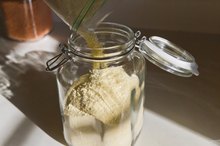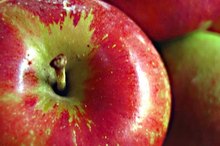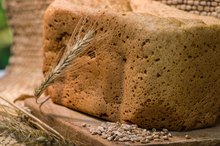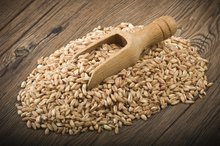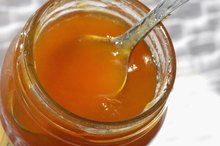How to Use Amylase in Baking
Bread making is practiced worldwide. Traditionally, natural, whole-grain flours were used for baking 1. Not all flours contain enough natural enzymes to process the yeast needed to help the bread rise, however. Enzymes such as amylase are added to process the yeast more effectively and improve the overall texture and taste of the bread. Various other enzymes are also needed to improve bread quality and aid with the interaction of gluten, an important ingredient contributing to bread structure.
What is Amylase?
Amylase is an enzyme that aids in the digestion of starches and sugars. In the baking process, fungal alpha-amylase is added to breads to break down starch into small sugars known as dextrins, making it easier for yeast to act 1. Breads made from grains that are low in natural amylase benefit from the addition to the dough to get the most out of yeast. If there is not enough sugar in a particular flour, yeast is not able to work as effectively, causing bread to become heavy and not rise properly.
- Amylase is an enzyme that aids in the digestion of starches and sugars.
- Breads made from grains that are low in natural amylase benefit from the addition to the dough to get the most out of yeast.
Types
What Is Sodium Stearoyl Lactylate?
Learn More
There are three types of amylase used for baking: bacterial, fungal and maltogenic 1. Fungal amylase works to help raise the bread, supplementing the flour. It creates a spongier, doughier consistency. Maltogenic and bacterial enzymes are mainly used to extend the shelf life of baked goods.
- There are three types of amylase used for baking: bacterial, fungal and maltogenic 1.
- Maltogenic and bacterial enzymes are mainly used to extend the shelf life of baked goods.
Amylase vs. Sugar
Yeast interacts with the natural sugars in the dough. To make a loaf of bread rise correctly, the yeast must be able to create the proper proportion of gases in the dough. Because the amylase breaks down starches into sugars, it is possible to create standardized loaves over and over again by adding the same amount of amylase to each loaf baked. This is advantageous in commercial production. In addition, the amylase contributes to a slower breakdown of sugars during the baking process, working in concert with yeast and matching its needs to help the loaf rise. As the loaf bakes in a hot oven, the increase in temperature activates the enzymes, breaking down more and more sugars with the help of fungal amylase. Once the loaf reaches a certain temperature, the enzymes stop acting. Adding additional sugar to the dough rather than using amylase doesn't produce this slow effect and causes the yeast to act faster, sometimes not producing the proper volume of gases necessary for a good rise.
- Yeast interacts with the natural sugars in the dough.
- In addition, the amylase contributes to a slower breakdown of sugars during the baking process, working in concert with yeast and matching its needs to help the loaf rise.
Malt vs. Amylase
Allergy to Sourdough Bread
Learn More
Malt powder is rich in enzymes and adds a sweet, nutty flavor to bread as well as helping to add a deep brown color to the crust. Malt can be added to dough to help bread rise because it is high in amylase; however, many bakers think it is better to bake with fungal alpha amylase. Malt primarily affects the finished taste and color of the bread and maintains the shelf life. The fungal amylase breaks down starches throughout the entire proofing process as well as during baking, helping the yeast to work continually while the fermentation process occurs. It maximizes this process to improve the loaf size and overall texture as well as the color and taste of the finished bread.
- Malt powder is rich in enzymes and adds a sweet, nutty flavor to bread as well as helping to add a deep brown color to the crust.
Related Articles
References
Writer Bio
Jean Bardot is a freelance writer and natural health practitioner. She started writing in 1994 and has contributed articles to publications such as "Similimum" and the "IFH Journal." She has a Bachelor of Science in public health from the University of North Carolina and a Master of Science in holistic nutrition from Clayton College of Natural Health.


